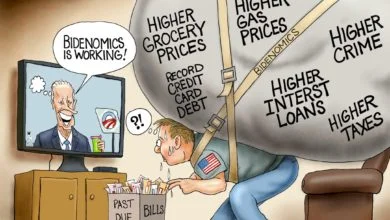Saudi Arabia Could Cash In On Democrats’ Climate Cash

As the ongoing “energy transition” progresses, hydrogen has once again become a trendy topic of conversation in the energy space as a fuel with high potential in both the transportation and power generation sectors.
The array of new incentives and subsidies applicable to hydrogen contained in the Inflation Reduction Act (IRA) play a big role here, nowhere more prominently than in the state of California.
For example, the Los Angeles City Council voted in early February to approve an $800 million proposal to convert one of the city’s biggest natural gas power plant to “green” hydrogen to great fanfare from the local press. The Los Angeles Times reported that “Council President Paul Krekorian described hydrogen as crucial to meeting L.A.’s goal of 100% clean electricity by 2035.”
But then Krekorian went onto say something that’s important here: “It was widely seen as being an impossible goal. And we’re now on the precipice of achieving that,” he said.
Krekorian’s statement means that the governing body of the nation’s second-largest city just voted to spend $800 million of its citizens’ money to convert its biggest power plant to a technology that is not currently even proven in any real way.
Whether the city can make this all work remains to be seen, but it all seems like a pretty bold risk with the potential to generate an ultimate price tag many times higher than the original estimate.
The hydrogen story related to California became even odder a few weeks later at S&P Global’s CERAWeek conference in Houston. There, Air Products Chairman, President and CEO Seifi Ghasemi informed the audience of his company’s intention to help supply the California market with its own “green” hydrogen production. He sees the Golden State as a big potential market, and Air Products plans to capitalize on it, taking advantage of the new federal incentives in the process.
But there’s a catch: Air Products’ intent is not to manufacture the hydrogen domestically using U.S. workers and U.S.-centric supply chains and equipment, but to make it in Saudi Arabia, in partnership with Saudi interests. This may all come as a bit of a surprise to West Virginia Sen. Joe Manchin, who repeatedly assured the press and his constituents that the intent of the IRA was to incentivize domestic projects with domestic supply chains.
As reported by S&P Global, Air Products’ plan would involve producing the green hydrogen at a massive production plant in Saudi Arabia and shipping it halfway across the globe to California, where it would compete with hydrogen produced in that state and other U.S. domestic locations. “Right now, we think most of that product will be sold either in Europe or in the state of California,” Ghasemi said during a March 8 panel discussion.
The plan is a part of a partnership formed in 2020 by Air Products with Saudi Arabia’s ACWA Power Co. and the planned Red Sea city the Saudi government has named Neom. The $8.5 billion hydrogen facility would be the world’s largest to date and would come online in 2027 if all goes to plan. The hydrogen produced at the plant would be loaded onto tankers in the form of ammonia and then be separated back into hydrogen at facilities located in market destinations.
S&P Global reports that Ghasemi’s remarks “drew pushback from California stakeholders seeking to develop domestic production capacity to meet nascent demand. The comments also underscored growing competition among companies trying to gain a foothold in a space recently backed by ample federal incentives,” a reference to the incentives contained in the IRA and the Bipartisan Infrastructure Law (BIL) enacted in 2021.
Today, according to the American Chemical Society, ammonia is most commonly made by combining hydrogen with nitrogen recovered from natural gas at high heat generated by natural gas. The plan approved by the Los Angeles city council envisions producing the hydrogen with wind and solar power, similar to the process to be used in the Saudi Arabian plant operated by Air Products.
There, the similarities end, however. Perhaps someone should ask the drafters of the IRA and Sen. Joe Machin, who provided the law’s decisive Senate vote last August, if the establishment of a new market that would make the U.S. partially dependent on imports of hydrogen from Saudi Arabia was really their intent?
Because that was certainly not what anyone was told at the time.
David Blackmon is an energy writer and consultant based in Texas. He spent 40 years in the oil and gas business, where he specialized in public policy and communications.
The views and opinions expressed in this commentary are those of the author and do not reflect the official position of the Daily Caller News Foundation.
Content created by The Daily Caller News Foundation is available without charge to any eligible news publisher that can provide a large audience. For licensing opportunities of our original content, please contact licensing@dailycallernewsfoundation.org
Agree/Disagree with the author(s)? Let them know in the comments below and be heard by 10’s of thousands of CDN readers each day!




